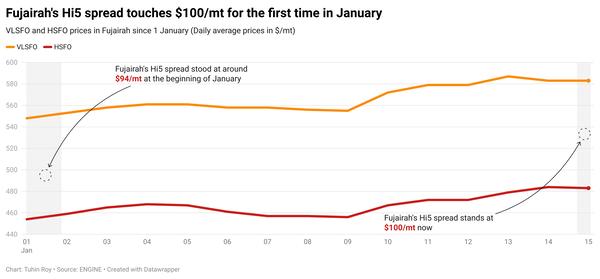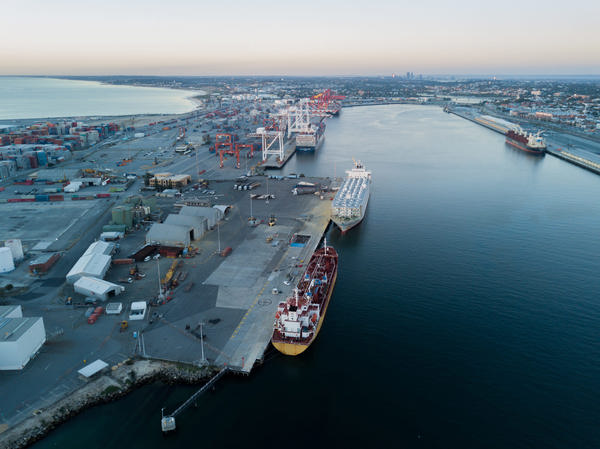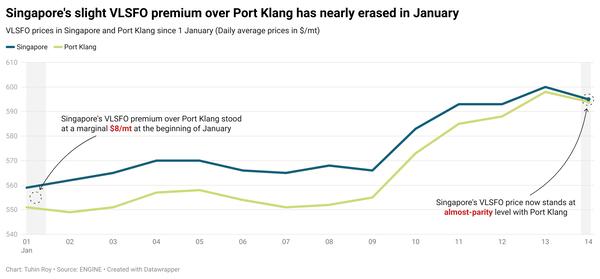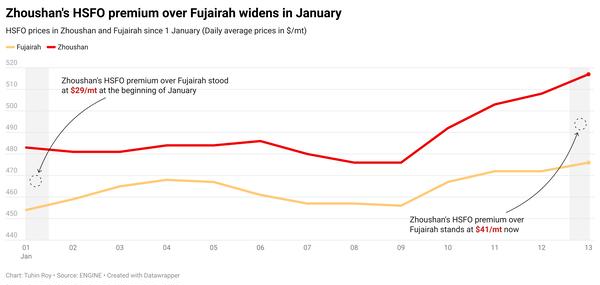East of Suez Market Update 13 Jan 2025
Most prices in East of Suez ports have moved up, and bunkering operations in Zhoushan’s OPL area have resumed after a six-day suspension due to bad weather.
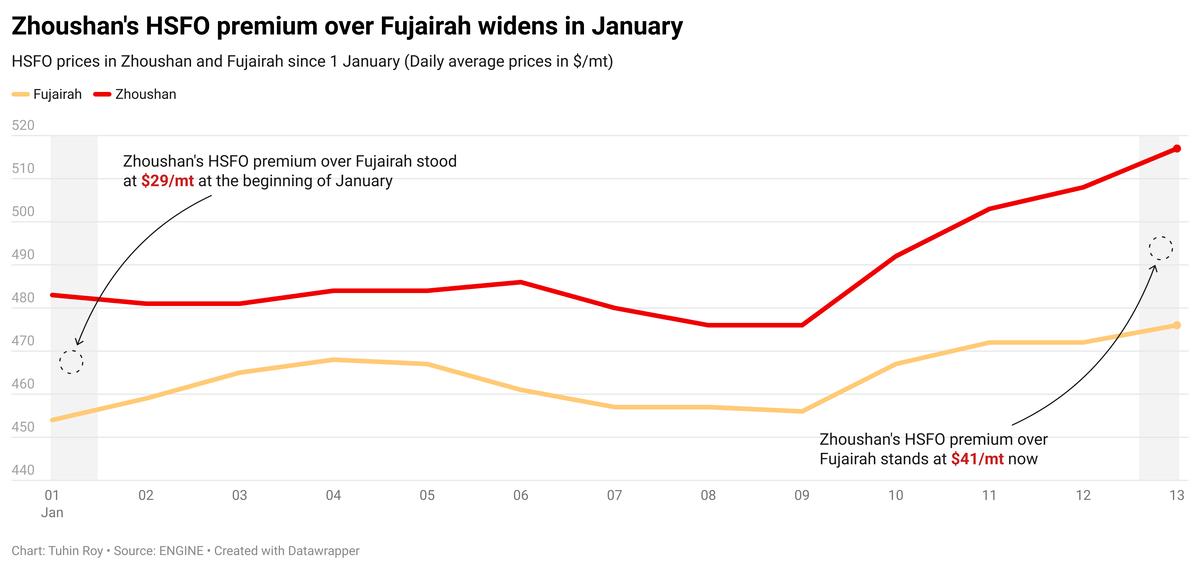
Changes on the day, to 17.00 SGT (09.00 GMT) today from Friday:
- VLSFO prices up in Singapore ($29/mt) and Fujairah ($22/mt), and unchanged in Zhoushan
- LSMGO prices up in Zhoushan ($58/mt), Singapore ($31/mt) and Fujairah ($20/mt)
- HSFO prices up in Zhoushan ($31/mt), Singapore ($18/mt) and Fujairah ($10/mt)
Most bunker benchmarks in East of Suez ports have increased over the weekend, tracking a sharp rise in Brent futures. VLSFO prices in Fujairah and Singapore have increased by $22-29/mt, while the grade's price in Zhoushan has remained relatively stable. A lower-priced VLSFO stem of 500-1,500 mt have contributed to keeping the benchmark steady in Zhoushan. Consequently, Zhoushan's VLSFO premium over Singapore has turned into a $15/mt discount, and its previously steep premium over Fujairah has been erased.
Zhoushan's HSFO price has seen a significant increase of $31/mt, the highest among the three major Asian bunker ports. Its HSFO premiums over Fujairah and Singapore currently stand at $41/mt and $18/mt, respectively.
Lead times in Zhoushan remain steady for VLSFO at 3-5 days, similar to last week. LSMGO lead times have improved from six days last week to 3-5 days now, while HSFO requires 4-7 days.
Bunkering operations at Zhoushan's Tiaozhoumen and Xiazhimen outer anchorages have resumed today, after being suspended for six days due to bad weather, a source says. All anchorages in the Zhoushan bunkering hub are now fully operational.
In Fujairah, prompt availability remains tight, with lead times for all grades unchanged at 5-7 days.
Brent
The front-month ICE Brent contract has gained $3.67/bbl on the day from Friday, to trade at $81.51/bbl at 17.00 SGT (09.00 GMT).
Upward pressure:
Brent’s price has surpassed the $80/bbl mark amid growing concerns about tight crude supplies in the global oil market.
The surge in Brent's price comes after the US government targeted Russia’s energy sector with increased sanctions on its major oil and tanker companies including Gazprom Neft and Surgutneftegas.
These sanctions “could affect tankers carrying approximately 1.5 million barrels per day [1.5 million b/d] of Russian crude—primarily destined for key Asian importers,” analysts from Saxo Bank said.
Brent futures gained more support amid expectations that President-elect Donald Trump will intensify oil sanctions on Iran. “Donald Trump has warned of maximum pressure on Iran, which could see additional sanctions introduced,” ANZ Bank’s senior commodity strategist Daniel Hynes remarked.
Downward pressure:
A key risk to Brent's price rise lies in the possibility of supply exceeding demand, particularly as OPEC+ prepares to bring additional oil barrels back into the market.
The Saudi Arabia-led coalition has already postponed its plan to unwind the 2.2 million b/d of voluntary cuts from 1 October 2024 to 1 April 2025, with room open for further delays.
Moreover, non-OPEC supply, primarily from the US, Brazil, Canada and Guyana, is expected to grow by 1.5 million b/d in 2025, according to the latest International Energy Agency (IEA) estimates.
By Tuhin Roy and Aparupa Mazumder
Please get in touch with comments or additional info to news@engine.online

Contact our Experts
With 50+ traders in 12 offices around the world, our team is available 24/7 to support you in your energy procurement needs.

